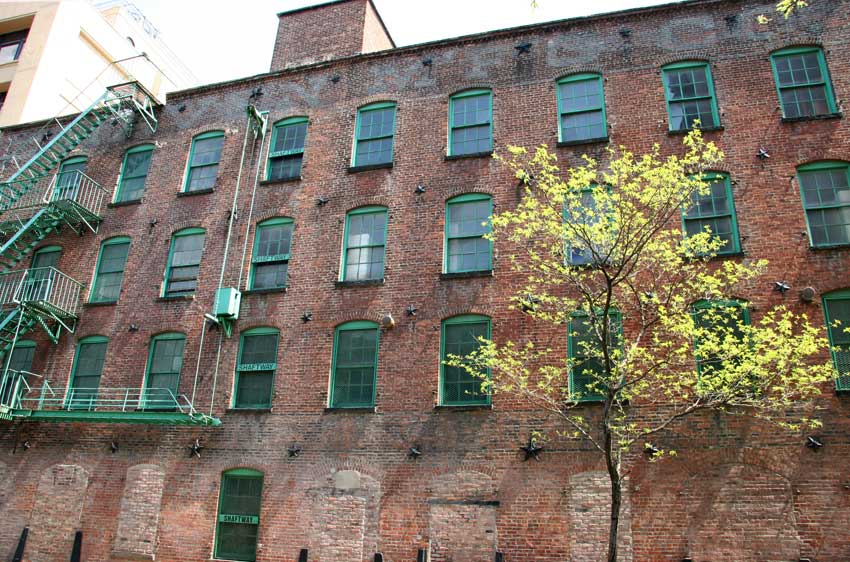

 De Haven Mfg. Co., 63 Furman St., Brooklyn, NY, 2010
De Haven Mfg. Co., 63 Furman St., Brooklyn, NY, 2010

The sign at the top of this building on Furman St., Brooklyn, reads DE HAVEN MFG CO. (The fire escape blocks the first four letters.) The founder of De Haven Mfg. Co. was Hugh De Haven (1862-1922). His death notice in the New York Times, 9 Dec. 1922, p. 12, was brief, reading, "De Haven - Hugh, suddenly at Hotel Netherland, Manhattan, Dec. 6. Funeral services will be held at the Church of the Holy Trinity, Clinton and Montague Sts., Brooklyn, Sunday, Dec. 10, at 3 P. M. Interment at convenience of family. Remains lying in state at Lafayette Chapel, 40 Lafayette Av., Brooklyn."
This building runs through the block to Columbia Heights on a steep incline up the hill to Brooklyn Heights, and De Haven Mfg. Co. was usually listed with the address 50-54 Columbia Heights. It had that address in Lain's Brooklyn Directory in 1893, and continued here through 1928. The company manufactured "hardware specialties." One of their products was metal box straps. New York State's First Annual Industrial Directory, for 1912, described De Haven Mfg. Co. as manufacturing metal box straps and recorded them with 41 employees, 30 men in the shop, and an office staff of 11.
This ad from the 1898 Brooklyn city directory cites the Trojan Box Strap as A Good Seller.
This ad from 1900 names Hugh De Haven, proprietor, and mentions Clutch Nails and Pail Hooks as other products.
This ad from 1901 appeared in The Blue Book Textile Directory of the United States and Canada and featured De Haven "Travelers". Give them a trial!
This ad appeared in Trow's New York City Business Directory, 1906.
This ad from the 1913 shows a Clutch Nail.
The De Haven name in company advertising is consistently spelled with a space between DE and HAVEN. However, most listings of the family name use the form DeHaven without the space.
Hugh DeHaven was born in Pennsylvania, August 1862, and is found in the 1900 and 1910 U. S. Census. In 1910 he lived at 41 Pierrepont St., Brooklyn, and described his occupation as "manufacturer, iron specialties." His son, Hugh Robertson DeHaven, (1895-1980) was 15 years old at the time.
Hugh DeHaven, Jr., was 22 and a student at Columbia University in 1917 when he registered for the World War I draft. Later that same year he survived an airplane crash, and had a subsequent career studying crash injuries and promoting safety precautions for both air travel and automobile travel. A great deal of information about Hugh DeHaven, Jr., can be found on the internet. The website, Dynamic Science, Inc. includes a photo and a brief description of his work.
An early invention of the elder Hugh DeHaven was this Clutch-Nail patented in 1889 when he lived in Oak Dale, Missouri. The full patent can be read on google patents Another DeHaven invention was this Bale-Tie patented in 1902 when he lived in Brooklyn. This can also be read on google patents A variant on the Bale-Tie was patented in 1904.
Copyright © 2011 Walter Grutchfield